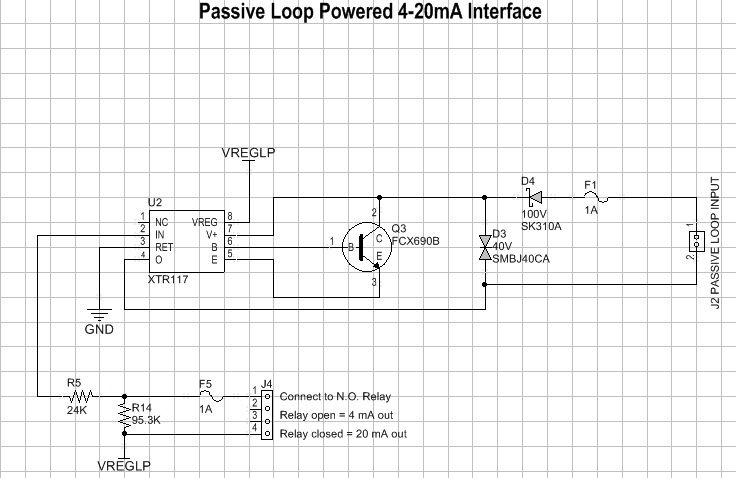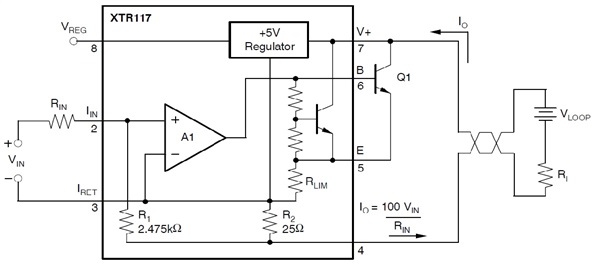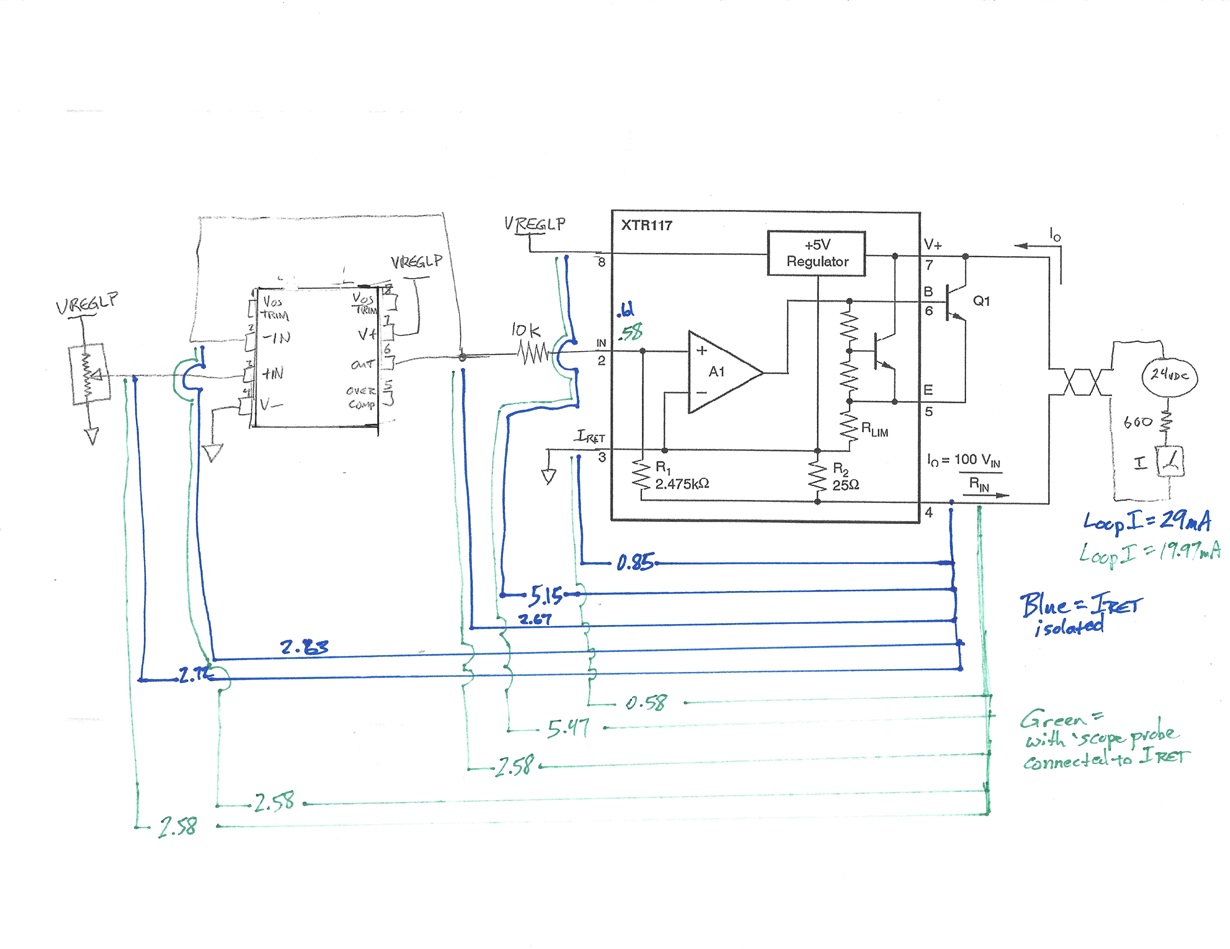Oh good, it’s another first time 4-20 mA loop designer getting tripped up in his grounds. This seems so simple and Collin Wells covers the subject so well in is blog posts “How to design fully isolated 4-wire sensor transmitters” consider this post my dose of humble pie.
Here is the schematic in question.
This circuit is to add 4-20 mA loop interface (source side) option to an existing product that monitors the state of an industrial environment. Data is a simple binary state, 4 mA = ‘nothing is happening’ and 20 mA = ‘that thing I watch for happened’. The monitor device already features an isolated mechanical relay so I chose to use that switch to drive the XTR117. As you can see Vreg runs through R14 & R5 to IN that 4 uA causing XTR117 to output 4 mA. When the monitored event occurs the relay shorts out R14 and the higher current causes XTR117 to output 20 mA until the relay is opened after 5 seconds. The node labeled GND connected to Iret is “intended” to be isolated per the repeated warnings in the literature.
Therein lies todays challenge. The circuit as drawn works fine, as long as I leave the ground clip of my oscilloscope attached to GND of the XTR117 circuit. I would expect violating the isolated nature of the Iret local ‘ground’ with the oscilloscope’s ground would break the circuit rather than allow it to work. When the ‘scope ground clip is disconnected the loop current goes to 28.x mA, which I assume is the device limiting at its max. In that state changes to Iin can only change loop current by a fraction of a mA.
The following drawing from XTR117 data sheet helps further illustrates how I am working with the circuit.
On my test bench Rl is a 600 ohm power resistor. The battery labeled Vloop is a bench supply set to 24 VDC, in series with it and Rl is a current meter monitoring the loop current. As mentioned in TI literature when I connect the scope ground to the Iret GND node this allows a connection via their power supplies between Iret and that supply standing in for the Vloop battery in the drawing above.
My working theory is the voltage shifts observed when scope ground meets Iret GND pulls the inverting input of A1 to a level where the circuit works. I would like my theory a lot more if connecting scope broke the circuit rather than fixing it! Beyond getting this first article working this raises concerns of circuit stability when deployed to conditions more hostile than my lab bench.
All comments and hints welcomed.




